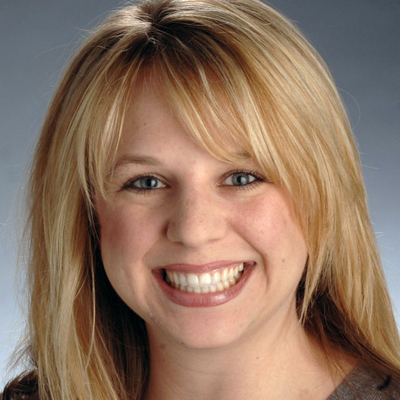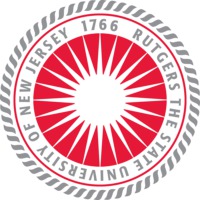Understanding mechanisms that help protect the fetus from being exposed to harmful chemicals
Pregnancy is an exciting time for a family – picking out names, stockpiling diapers, and celebrating a new arrival. An expectant mom has many questions about how she can have a healthy pregnancy, and it is common for pregnant women to worry about the safety of chemicals found in her diet, medication, and personal care products, to which she and her baby are exposed. Dr. Lauren Aleksunes, Associate Professor of Pharmacology & Toxicology, and her team at Rutgers University are working to understand how the placenta regulates the exposure of babies to chemicals and drugs by using a wide array of scientific tools in their research. Within the placenta, there are proteins that help to create a ‘barrier’ for the passage of some chemicals from mom to baby, to protect the fetus from being exposed to harmful chemicals. Focusing on one such protein, the ABCG2 transporter, Dr. Aleksunes hopes to characterize the interaction of specific chemicals and drugs with the ABCG2 transporter and determine periods when the ABCG2 protein is not working optimally.
As an “export protein,” the ABCG2 transporter acts as a ‘barrier’ in the placenta not by blocking out chemicals like a physical wall, but by quickly removing chemicals that make their entry into the placenta back into the mother's blood. Unfortunately, the ABCG2 protein can also hinder beneficial treatments from reaching the fetus, and thus it is critical to understand how harmful chemicals can be kept out while good chemicals can break through. Dr. Aleksunes is part of the Placenta Working Group at Rutgers University, which is comprised of translational and basic investigators, clinicians, and pharmaceutical scientists who have established the key technologies needed for analyzing the overarching regulation pathways that control and help maintain ABCG2 as a protective mechanism in the placenta. Using methods spanning from DNA and RNA sequencing and protein analysis to quantification of drugs and chemicals in human tissues, urine, and placenta, Dr. Aleksunes hopes to understand the circumstances under which ABCG2 may not work, and to recruit patients to collect and analyze samples.
Current Projects include:
- Diabetes Drugs: In the United States, the prevalence of gestational diabetes is reported by the Centers for Disease Control to be as high as 9%. Dr. Aleksunes and her colleagues have recently identified factors that can reduce the placental barrier to drugs including a commonly used medication that treats gestational diabetes. These factors include genetics, components of diet and periods of stress to the placenta. Studies are underway to test whether these factors lower the ability of the placenta to prevent diabetes drugs from reaching the baby. This is important because if the baby becomes exposed to the diabetes drug, the baby's blood sugar levels can be reduced which can lead to developmental problems.
- Endocrine Disrupting Chemicals: Dr. Aleksunes is investigating how transport proteins in the placenta can protect the baby from environmental chemicals such as ‘endocrine disruptors.’ Her team aims to identify the proteins that transport chemicals in the placenta and mechanisms to limit their passage to the baby. As part of this project, over 100 placentas have been collected from healthy, term pregnancies in order to understand how genetics can influence a baby’s exposure to chemicals.
Other research in Dr. Aleksunes’ laboratory aims to determine how transporter proteins also impact kidney toxicity resulting from cancer drugs, liver diseases of pregnancy, and the susceptibility of the brain to neurodegeneration.
Bio
Dr. Aleksunes is an Associate Professor in the Rutgers University, Ernest Mario School of Pharmacy, Department of Pharmacology and Toxicology, and the Joint Graduate Program in Toxicology.
As a pharmacy student, Dr. Aleksunes became interested in research through working in the laboratories at the University of Connecticut and Bristol-Myers Squibb. It was a new experience for her -- asking questions that had never been posed before and designing (and often re-designing) experiments to answer them. As a pharmacist and a scientist, Dr. Aleksunes is able to go beyond one-on-one patient interactions and ask questions that can be applied to larger groups of patients. Continuing today, her laboratory works to move their basic research findings to human populations through the inclusion of patients or human tissues. Dr. Aleksunes specializes in the field of toxicology, which studies the harmful effects of drugs and chemicals. While many scientists are focused on developing new drugs to treat diseases, Dr. Aleksunes aims to understand what determines whether a chemical is toxic and the steps that can be taken to lower the risk of exposure or injury.
Although there wasn’t a clear turning point that placed Dr. Aleksunes on track to research, she has always been interested in the sciences and possessed innate curiosity about how the world works. In fact, her father has recently found a video of her childhood of when she was about seven years old. In this video, she is opening her presents on a Christmas morning, and finds out that she received a microscope from Santa, to which she exclaims, “Now I can start my experiment!”
In her spare time, Dr. Aleksunes enjoys doing needlepoint, particularly that of chemical structures, as well as quilting, gardening, and baking.
For more information, visit http://eohsi.rutgers.edu/eohsi-directory/name/lauren-aleksunes/

In the News
NIEHS News
Publications
Awards
Scientific Achievement Award, 2015
Xenotech Global
Achievement Award, 2016
Society of Toxicology
Mentor of the Year, 2015
American Foundation for Pharmaceutical Education
Board of Trustees Research Fellowship for Scholarly Excellence, 2014
Presidential Fellowship for Teaching Excellence, 2014
Graduate of the Last Decade (GOLD) Award, University of Connecticut, 2012
Alumni Association, Storrs, CT
Outstanding New Environmental Scientist (ONES) Award, 2011
National Institute of Health / National Institute of Environmental Health Sciences


